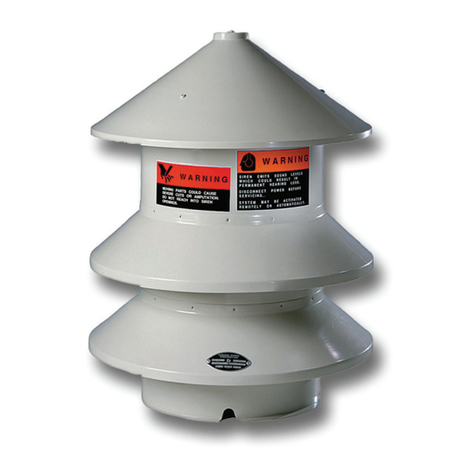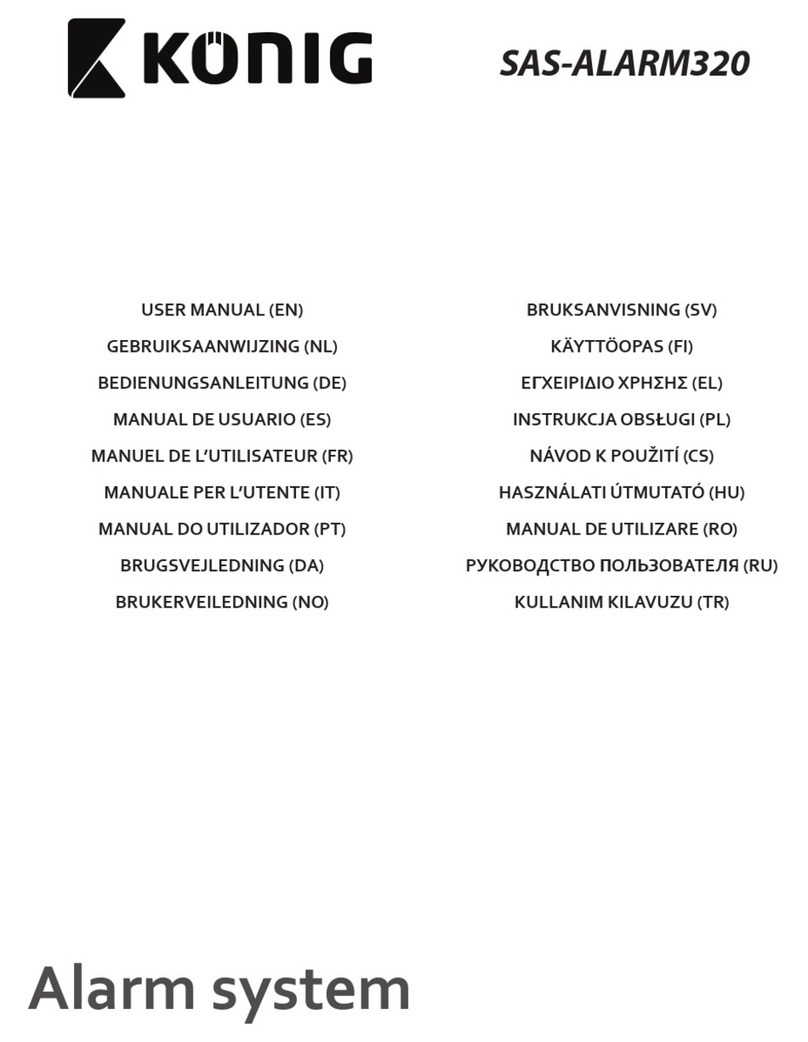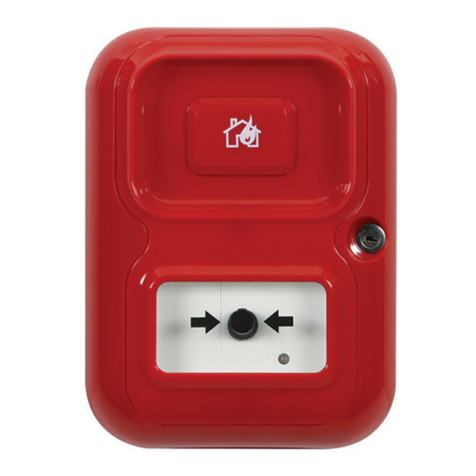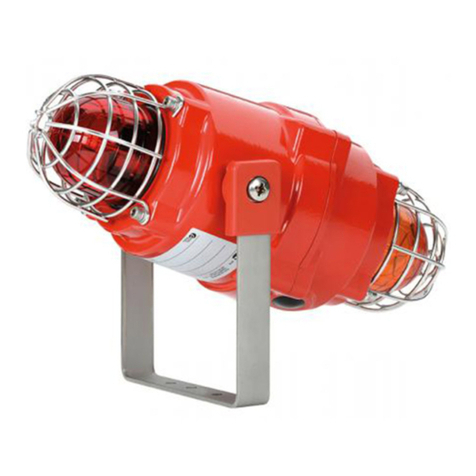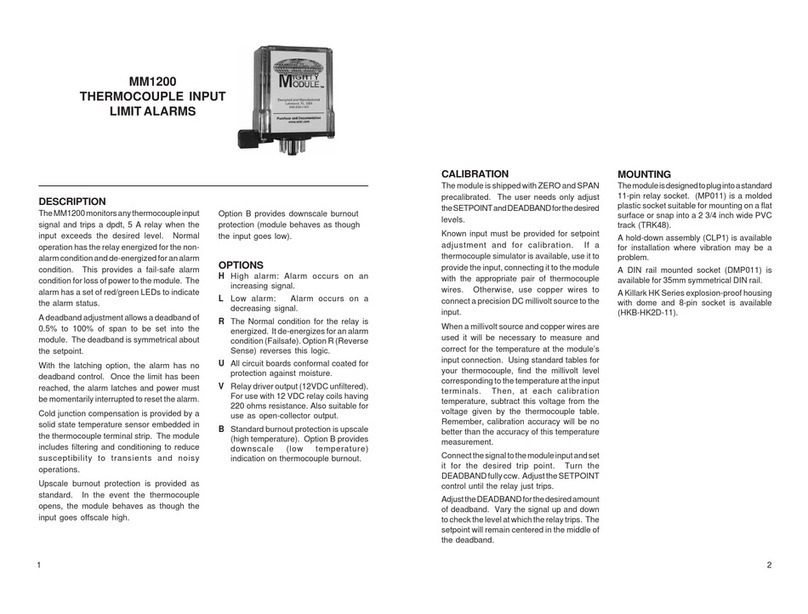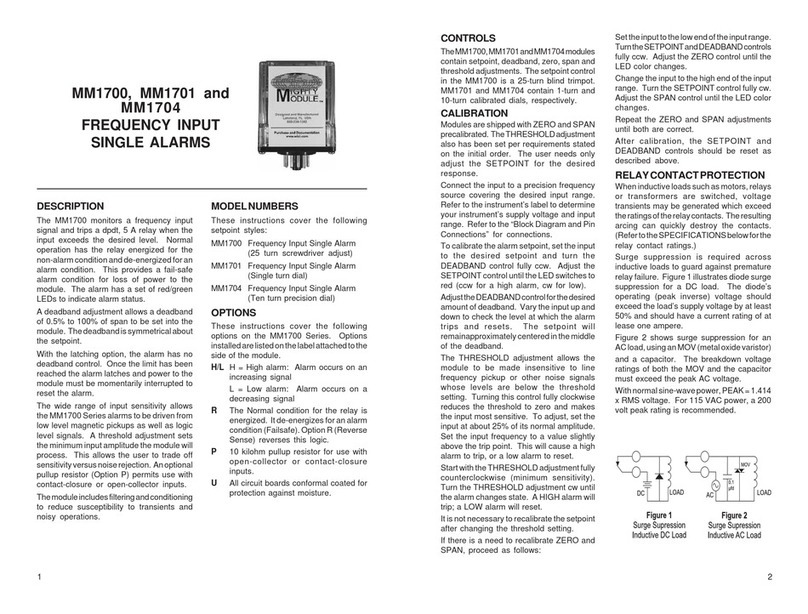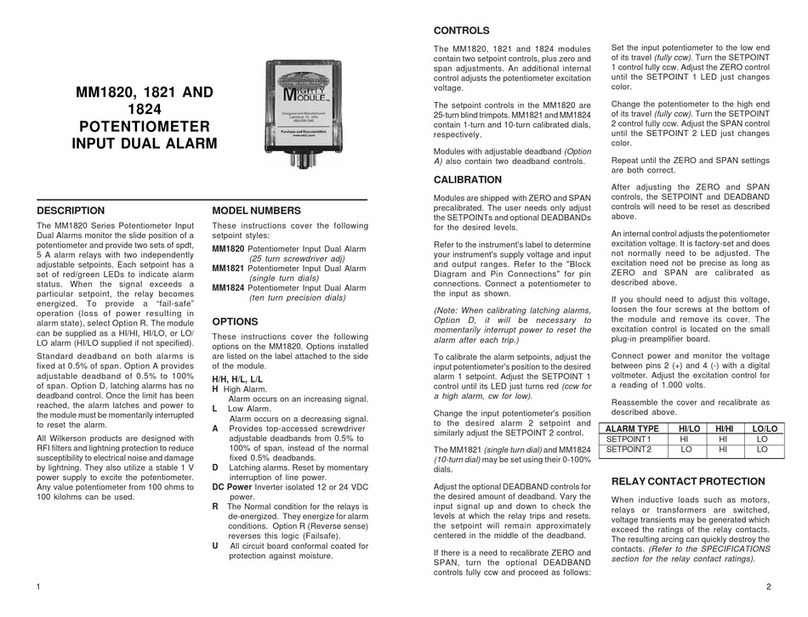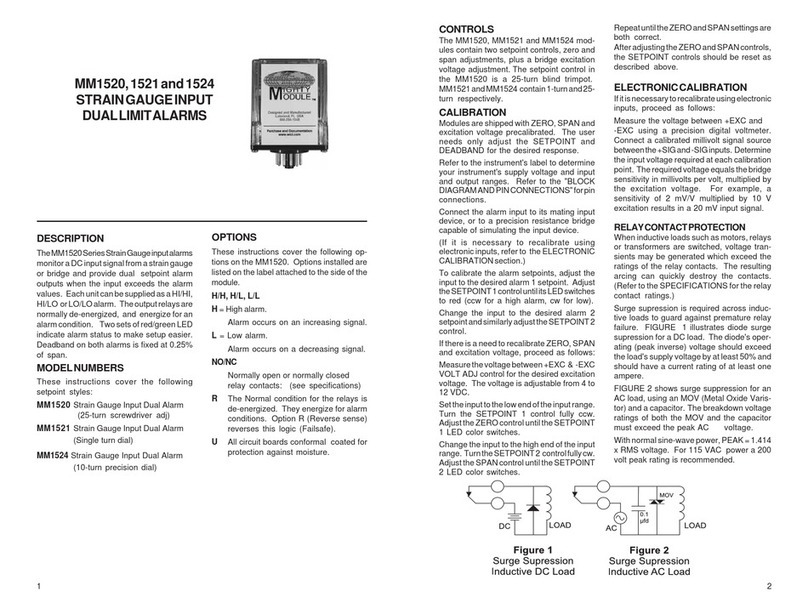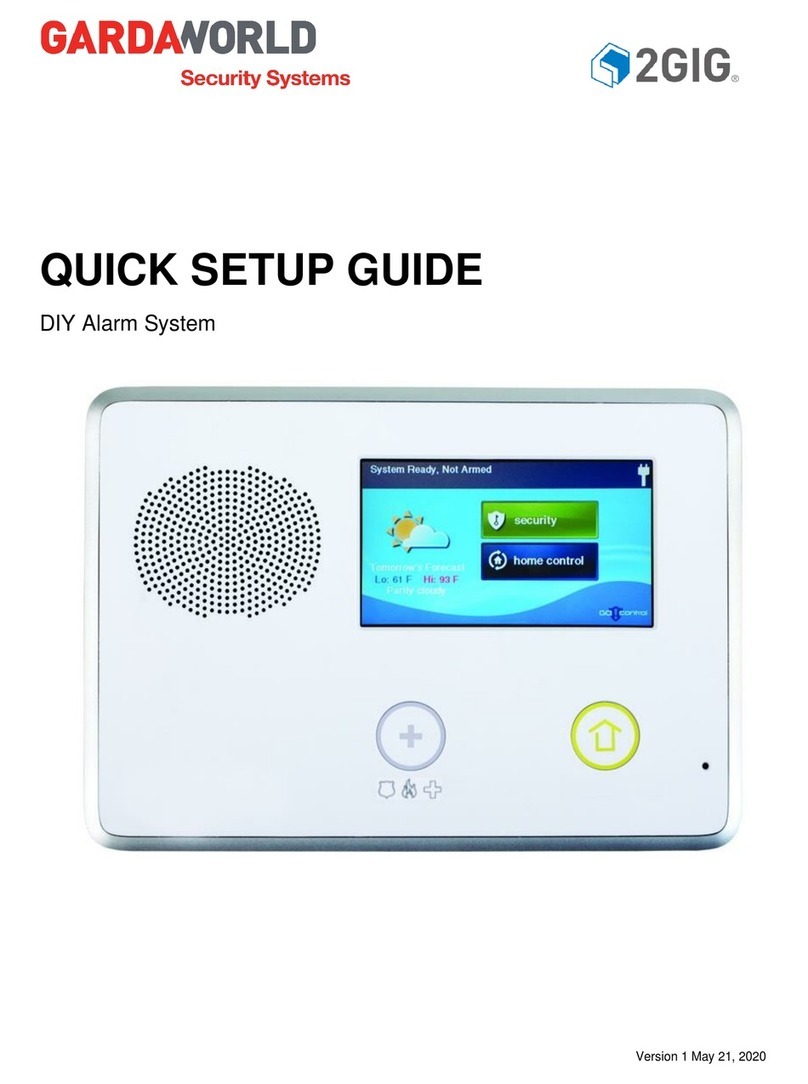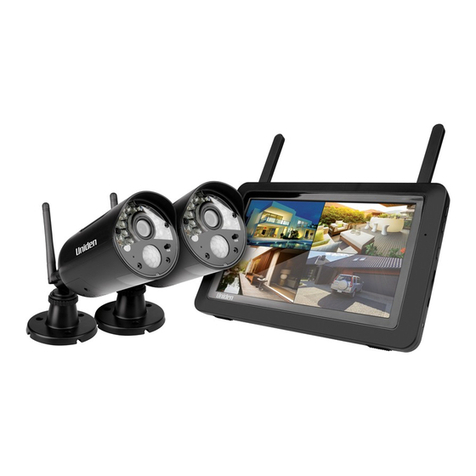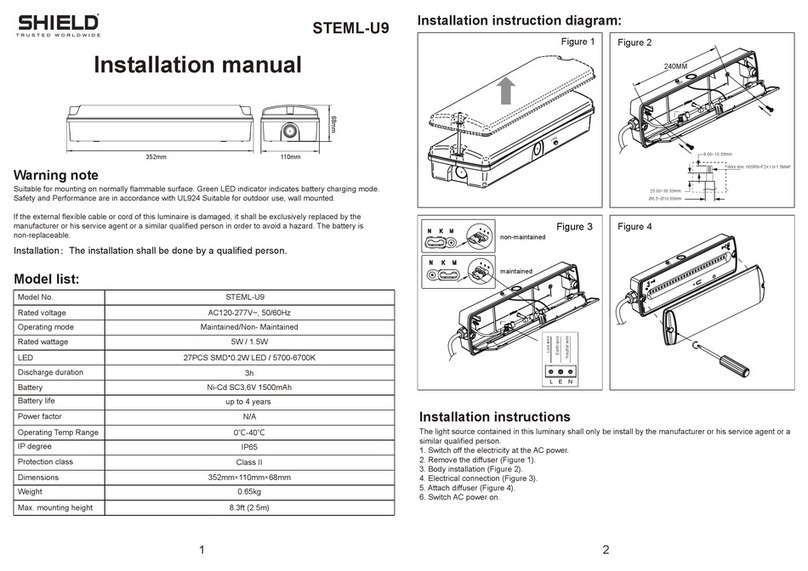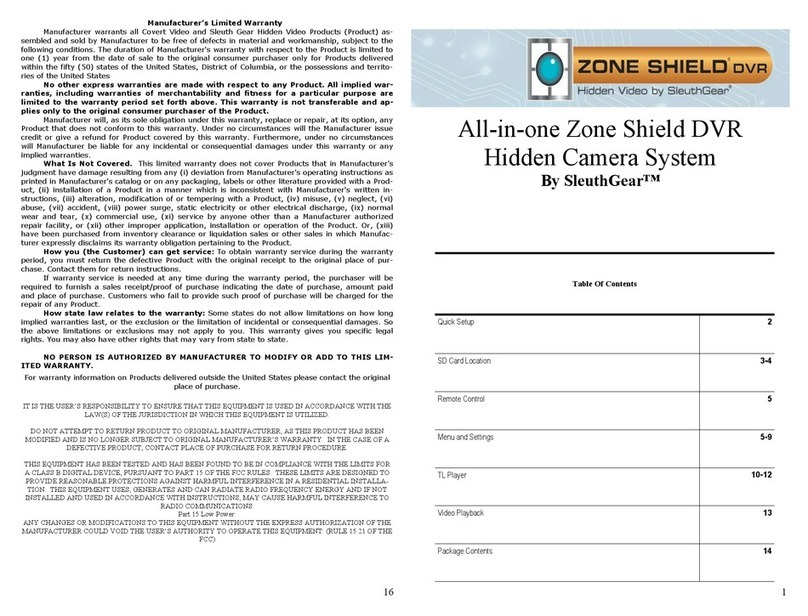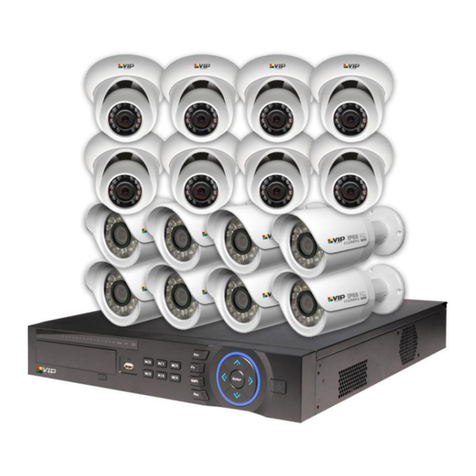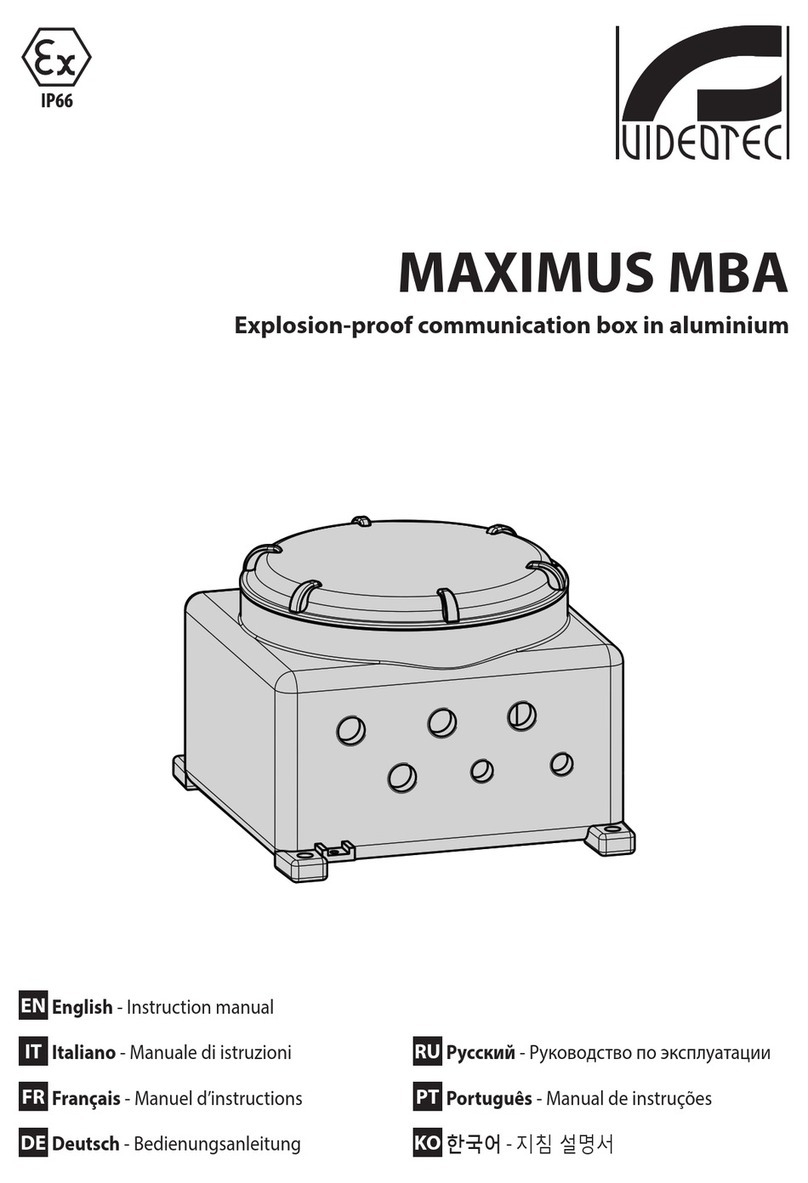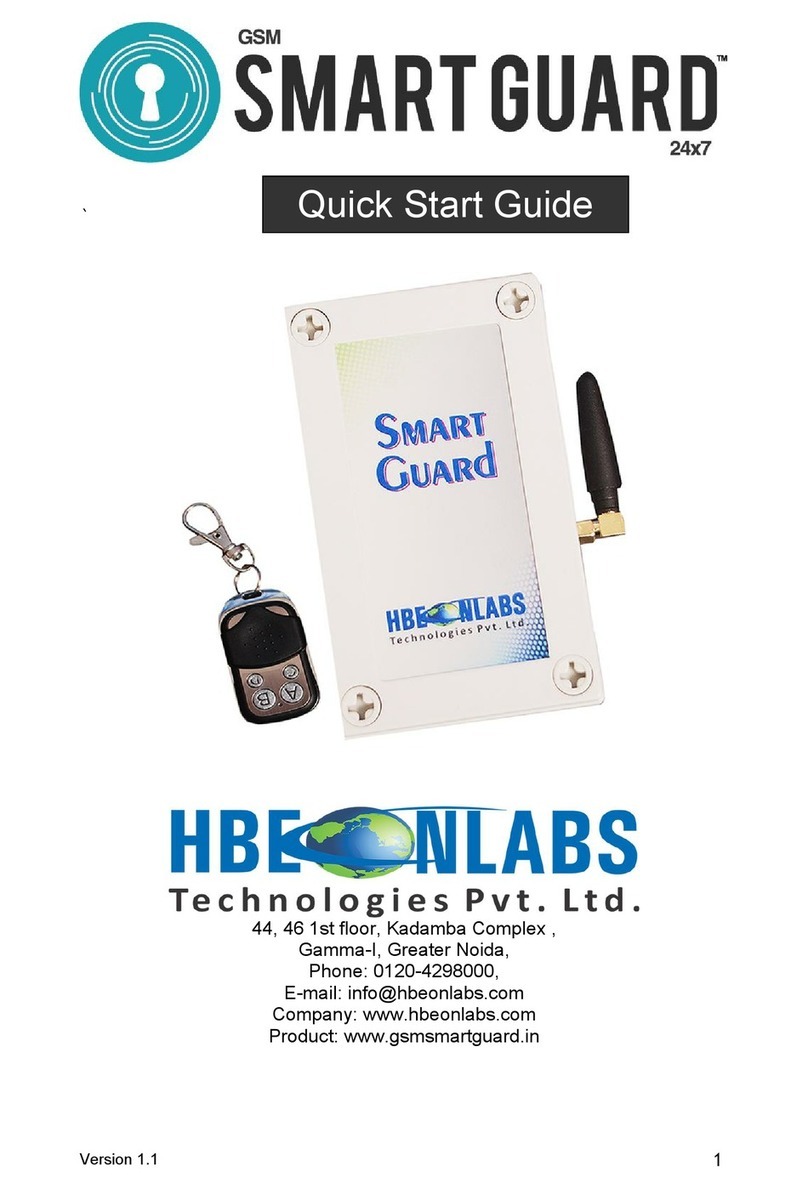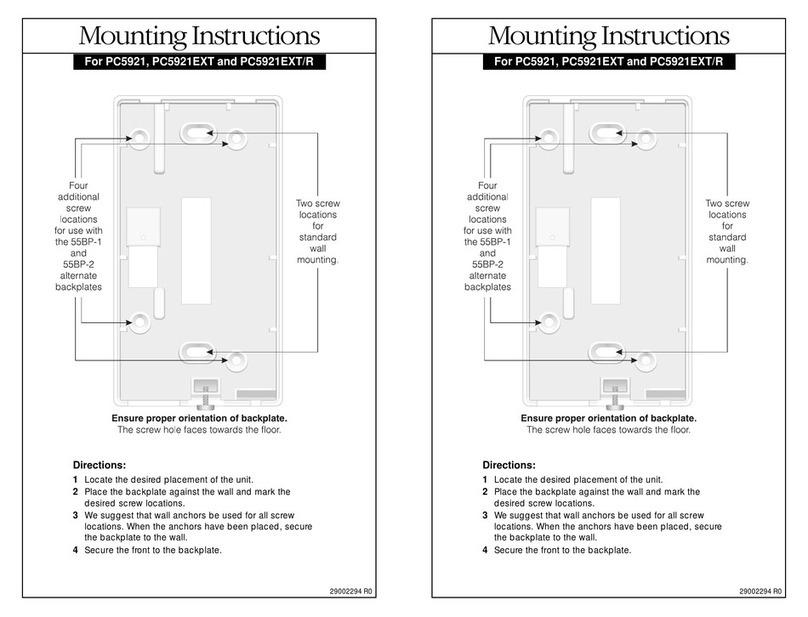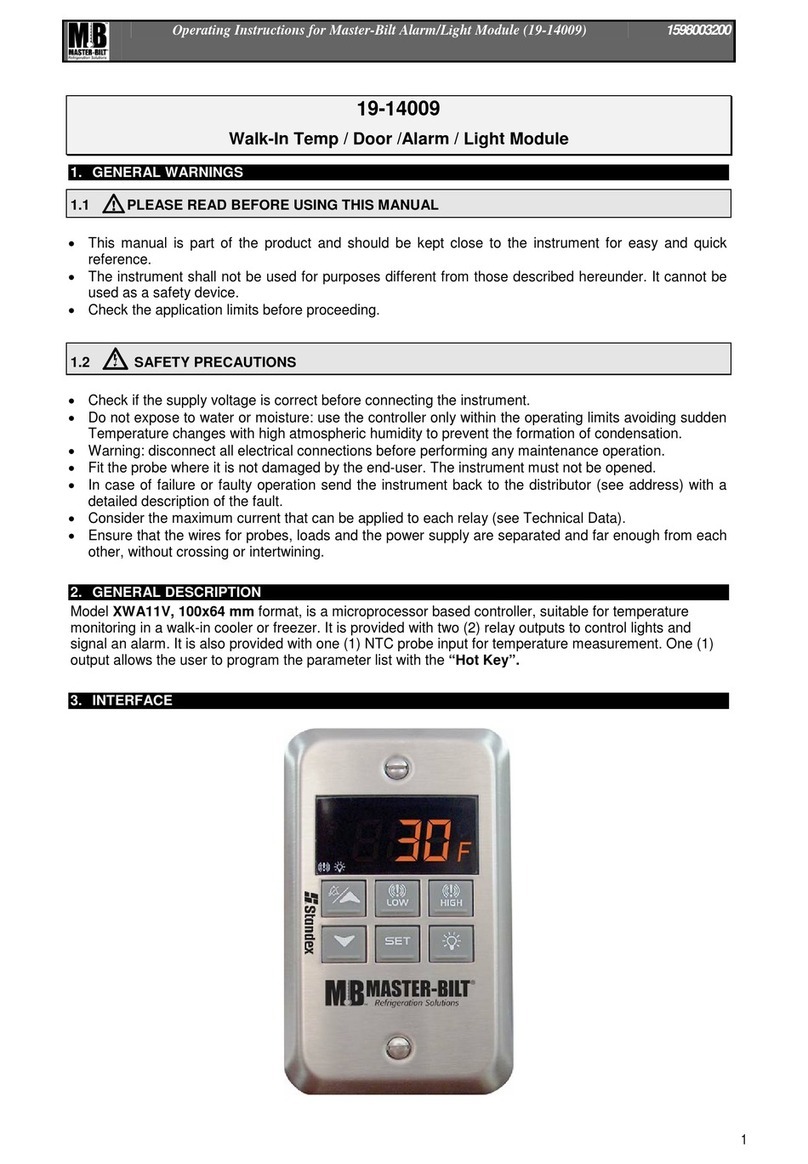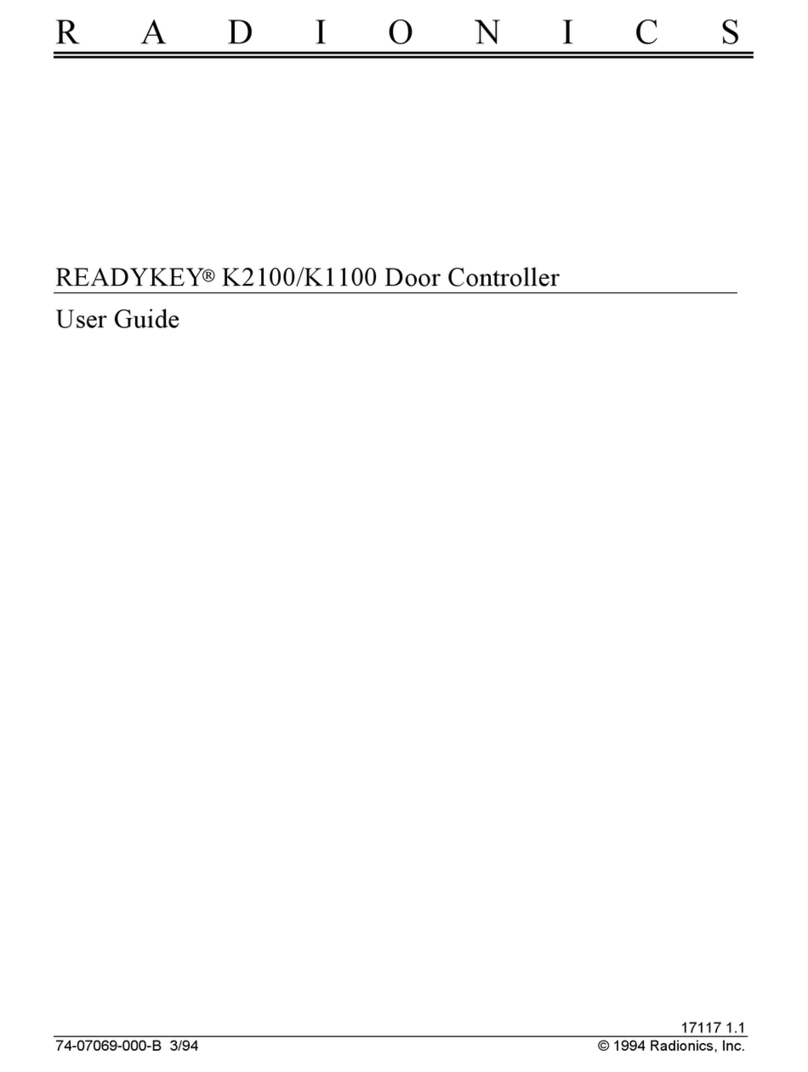DESCRIPTION
TheMM1420SeriesRTDinputalarmsmoni-
tor an RTD (resistance thermometer) input
and provide two sets of SPDT, 5A alarm
relays with two independently adjustable
setpoints. Each setpoint has a set of red/
greenLEDs toindicate alarmsstatus. When
theinput is betweenthesetpoints, therelays
arenormally de-energized. When thesignal
exceeds a particular setpoint, the relay be-
comes energized.
EachmodulecanbesuppliedasaHI/HI,HI/
LO, or LO/LO alarm (HI/LO supplied if not
specified). Toprovidea“fail-safe” operation
(loss of power resulting in an alarm state),
select Option R.
Standard deadband on both alarms is fixed
at 0.5% of span. (Option A provides adjust-
able deadband of 0.5% to 100% span.)
Option D, latching alarms, has no deadband
control. Oncethelimithasbeenreachedthe
alarmlatchesand power to the modulemust
bemomentarilyinterruptedtoresetthealarm.
The modules include filtering and condition-
ing to reduce susceptibility to transients and
noisy operations.
MODELNUMBERS
These instructions cover the following
setpoint styles:
MM1420 RTDInputDualAlarm
(25 turn screwdriver adj)
MM1421 RTDInputDualAlarm
(Single turn dials)
MM1424 RTDInputDualAlarm
(Ten turn precision dials)
OPTIONS
These instructions cover the following op-
tions on the MM1420. Options installed are
listed on the label attached to the side of the
module.
AProvides top accessed screwdriver ad-
justable deadbands from 0.5% to 100%
of span, instead of the normal fixed 0.5%
deadbands.
DLatching alarms. Reset by momentary
interruption of line power.
DC Power Inverter isolated 12 or 24 VDC
power.
E11-pin header instead of standard 20-
pin. Available only on MM1420, MM1421
and MM1424 without Option T.
RThe Normal condition for the relays is
de-energized. They energize for alarm
conditions. Option R (Reverse sense)
reverses this logic (Failsafe).
UAll circuit boards conformal coated for
protection against moisture.
CONTROLS
TheMM1420,MM1421andMM1424modules
contain two setpoint controls, plus zero and
span adjustments. The setpoint controls in
the MM1420 are 25-turn blind trimpots.
MM1421andMM1424contain1-turnand10-
turn calibrated dials, respectively. Option A,
adjustable deadband, adds two deadband
trimpots.
CALIBRATION
Modules are shipped with ZERO and SPAN
precalibrated. The user needs only adjust
theSETPOINTSandoptionalDEADBANDS
for the desired levels.
MM1420, MM1421 &
MM1424
RTD INPUT
DUAL ALARMS
Refer to the instrument’s label to determine
your instrument’s supply voltage and input
and output ranges. Refer to the “Block
Diagram and Pin Connections” for connec-
tions. 20-pin and 11-pin styles both are
shown.
Connect a precision decade resistance,
potentiometer or RTD simulator to the input.
To avoid errors due to the resistances of the
connecting wires, use a three-wire connec-
tionas showninthe “BlockDiagram andPin
Connections”.
(Note: When calibrating latching alarms,
OptionD, it willbe necessary tomomentarily
interrupt power to reset the alarm after each
trip.)
To calibrate the alarm setpoints, begin with
theoptionalDEADBANDcontrolsturnedfully
ccw. Adjust the input resistance to the
desiredalarm1setpoint. AdjusttheSETPOINT
1 control until its LED just turns red (ccw for
a high alarm, cw for low).
Change the input resistance to the desired
alarm 2 setpoint and similarly adjust the
SETPOINT2control.
The MM1421 (single turn dial) and MM1424
(10-turn dial) may be set using their 0-100%
dials.
Adjust the optional DEADBAND controls for
the desired amount of deadband. Vary the
input signal up and down to check the levels
at which the relay trips and resets. The
setpoint will remain approximately centered
in the middle of the deadband.
If there is a need to recalibrate ZERO and
SPAN,turntheoptionalDEADBAND controls
fully ccw and proceed as follows:
Set the resistance to the low end of the input
range. Turn the SETPOINT 1 control fully
ccw. Adjust the ZERO control until the
SETPOINT1LEDjust changes color.
Changetheresistancetothehighendofthe
input range. Turn the SETPOINT 2 control
fully cw. Adjust the SPAN control until the
SETPOINT2LEDjust changes color.
Repeat until the ZERO and SPAN settings
both are correct.
After adjusting the ZERO and SPAN con-
trols, the SETPOINT and DEADBAND con-
trols should be reset as described above.
RELAYCONTACTPROTECTION
When inductive loads such as motors, relays
or transformers are switched, voltage tran-
sients may be generated which exceed the
ratings of the relay contacts. The resulting
arcing can quickly destroy the contacts.
(RefertotheSPECIFICATIONSbelowforthe
relay contact ratings.)
Surge suppression is required across induc-
tive loads to guard against premature relay
failure. Figure 1 illustrates diode surge sup-
pressionforaDCload. Thediode’soperating
(peak inverse) voltage should exceed the
load’s supply voltage by at least 50% and
should have a current rating of at least one
ampere.
Figure 2 shows surge suppression for an AC
load, using an MOV (Metal Oxide Varistor)
and a capacitor. The breakdown voltage
ratings of both the MOV and the capacitor
must exceed the peak AC voltage.
Withnormal sine-wavepower, PEAK= 1.414
xRMSvoltage. For115VACpowera200volt
peak rating is recommended.
ALARM TYPE HI/LO HI/HI LO/LO
SETPOINT1 HI HI LO
SETPOINT 2 LO HI LO
1 2
